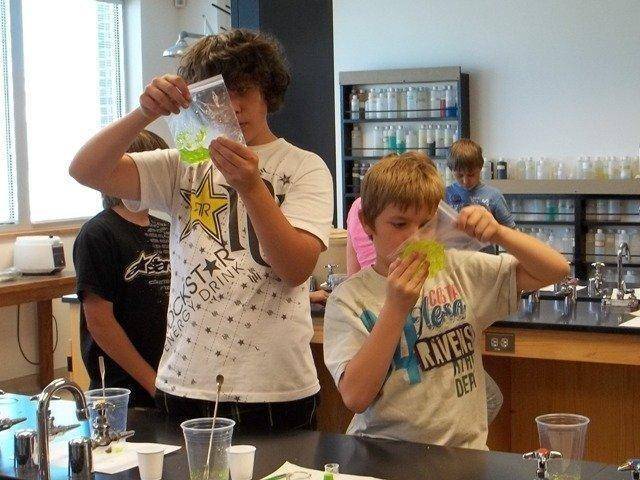When Jon Krum was a young boy, he liked to play god. He admits using a water bottle laced with Dawn detergent to change the surface tension of water– it killed all the water skeeters. He also learned how to make dry ice bombs.
If you think it sounds a bit macabre, Krum agrees. “I should be more positive than talking about killing and blowing up things,” he said, responding to a question regarding how he became interested in his profession. “But, in essence, that’s what got me into science. “
Though the experiments they shared with students this week were not asВ dark, the USU Eastern professors who hosted nearly 900 local elementary school students hoped to share the same type of fascination they learned as children.
“I hope that they, by interacting and touching and feeling and seeing things happen, would ask, ‘I wonder why?’В That’s all I want. I want some one to say ‘why’ or to ask, ‘what if I had done this?’ Those ‘what ifs’ and ‘whys’ create a positive interaction with the sciences,” Krum expressed.
Joined by colleagues John Weber, David Kardelis, Scott Henrie and Richard Walton, Krum and the college hosted the USU Eastern Science Visit, inviting 4th, 5th and 6th graders to the campus to experience the excitement of the sciences.
Summarizing what he wanted the students to learn, Krum said, “First, that science is cool. Second, that [USU Eastern]is a pretty neat place, and [they] might think of going to college here. Third, that it’s great to be a geek! In reality, geeks get the babes.”
Students used chemistry to write messages with invisible ink, and to make colorful slime; they used physics to construct and launch bottle rockets; and they learned criminal justice techniques to extrapolate information from a crime scene.
According to Krum,В the idea for the event was to encourage students to become “more interested and enthusiastic” toward the sciences. ” When I look at the economy and the environment that we’re living in, I think the [opportunities in] the sciencesВ will increase,” he said. “SoВ wanted to createВ a consortiumВ of individuals that would facilitate the spread of science in this community, because we are a community college.”
Though admitting some fatigue from four days of activities– the time spent equates to teaching a 2-credit hour course in just four days– the professors were pleased with by how well the event turned out. “It was definitely a positive experience on our part,” Krum said.
He expressed his gratitude to his colleagues saying, “The burden that was placed on these faculty members and their integrity and belief in teaching the sciences is astounding, and I applaud them. It couldn’t have been done without these individuals.”

